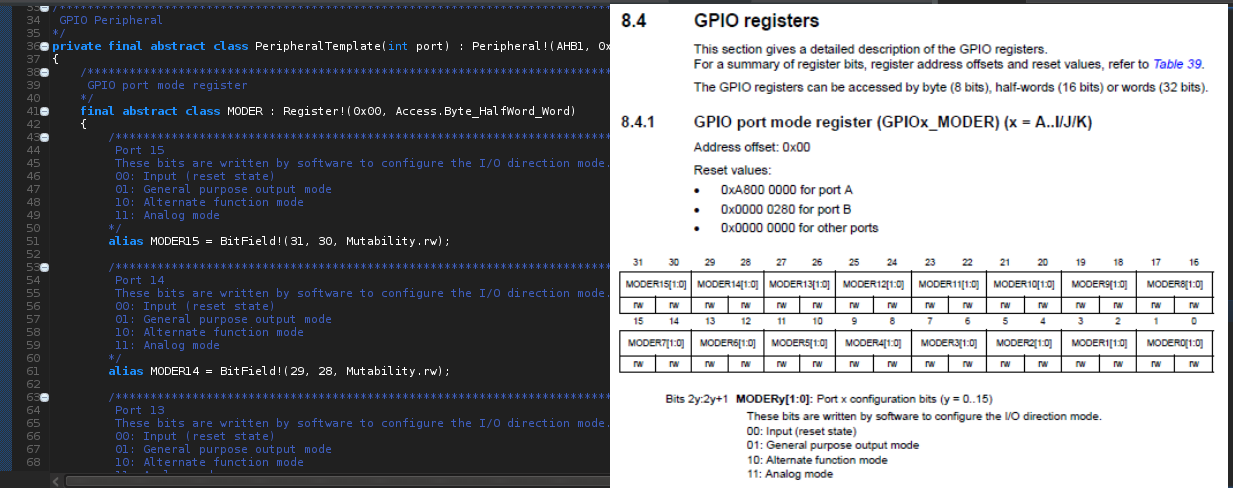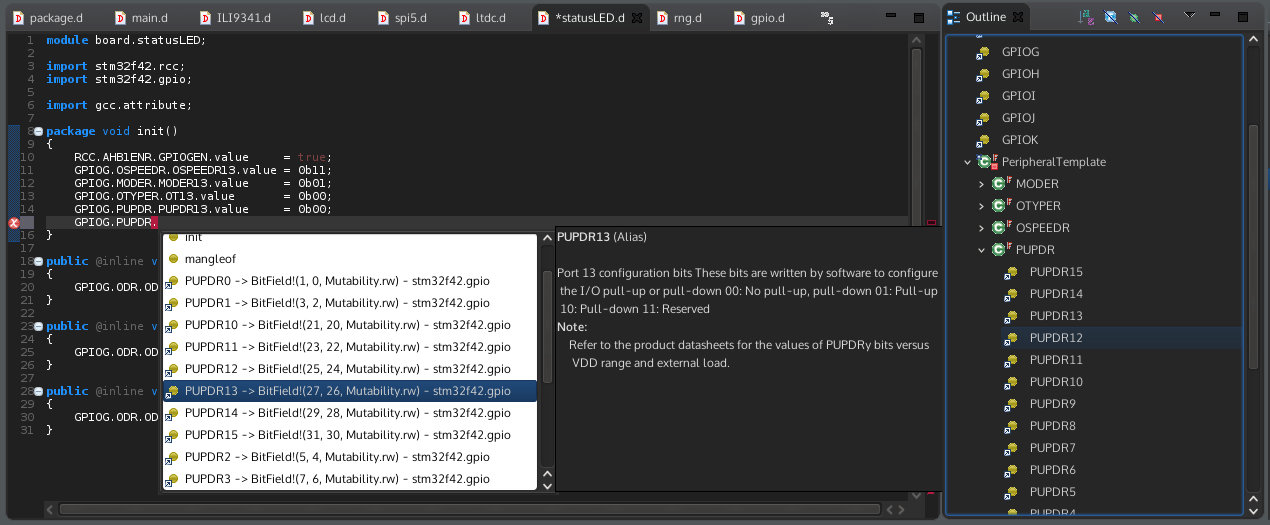A simple demonstration of using D to bare-metal program an STM32F29I Discovery Board
Run rdmd build.d -c=gdc to build with GDC. You will need a GDC ARM cross compiler.
Run rdmd build.d -c=ldc to build with LDC. You can use one of the downloads from the LDC releases.
You need to install dmd and dtools (for rdmd), arm-none-eabi-gcc (for arm-none-eabi-gdb), and openocd from your Linux distribution's package manager.
- It works!
- No CRT startup files, libgcc, libc, or vendor's C peripheral libraries were used. EVERYTHING is in D.
@safeand-dip1000compatible- No Stinking
-betterC. If you don't want the overhead of a certain feature of D, don't use it. - Compile-time enforcement of register/bitfield mutability
- Compile-time optimization of MMIO register access by turning byte- and half-word-aligned accesses into single, atomic reads/writes. Single-bit bitfields are optimized at compile time to use ARM's bitbanding feature for atomic access. This increases performance, reduces code size, and is all abstracted from the user.
- Setting multiple bit fields in a register with a single read-modify-write
with(GPIOA.MODER)
{
setValue
!(
MODER3, 0b10 // Alternate function mode
, MODER4, 0b10
, MODER6, 0b10
, MODER11, 0b10
, MODER12, 0b10
);
}- Seems to be pretty fast, but I still need to verify the generated code to ensure optimizations are being performed properly
- Small Code Size (3k). The data in the BSS segment is my LCD's frame buffer, so that really doesn't count.
Optimized for size
text data bss dec hex filename
3124 0 153600 156700 2641c binary/firmware
Optimized for speed
text data bss dec hex filename
5888 0 153600 159488 26f00 binary/firmware
- The code resembles the register descriptions in the STM32 reference manual for easy cross-referencing.

- Good integration with tooling. e.g Register descriptions in DDoc popups, and register layout in outline and code completion windows. In other words, the code is the datasheet.

- The implementation of D runtime is minimal, and therefore incomplete, but a C-like subset of D (inline assembly, structs, templates, mixins, and even static classes) is available.
- I didn't put much diligence and care into some of the code, because I was anxious to just get something to appear on the LCD screen. There are a lot of magic numbers that should be enums, and there is no hardware abstraction layer - the program directly manipulates the memory-mapped IO registers. There are also some static asserts that should be added for compile-time sanity checks. Lots of refactoring and code quality improvements still need to be done.
